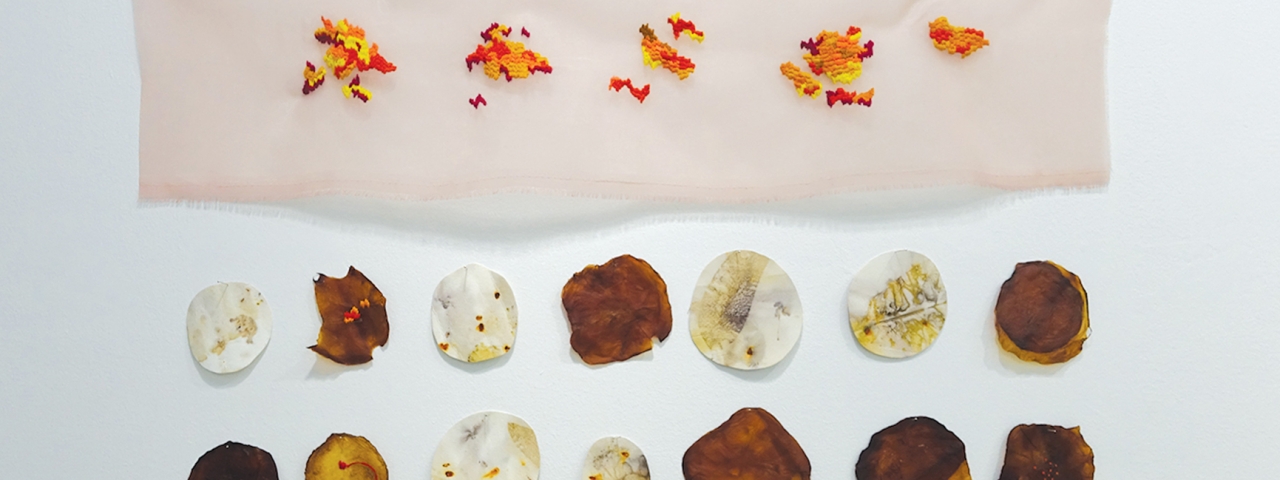Starting Little Fires Inside the house standing at the cradle of the end-times—something is cooking slowly in the kitchen. In Katherine Nuñez’ latest exhibition “Starting Little Fires”, it is the patches that embrace all, and the modest spaces become houses: containers maintaining worlds and sustaining bodies in the thick of precarity. Nuñez’ fixation on softness, on small gestures running deeply, finds its fluent expressions in a quilted patchwork of practices cumulating past and present works with organic materials, textiles, and care work. What is revealed is a structure in the form of a kitchen, a garden, an organism, all at once a sanctuary where domesticity attains emancipation from systemically-imposed banality and a refuge from unforeseeable futures.
The structure is sewn together by the artist’s proclivity for harmonizing complementary themes such as violence and tenderness—visually articulated and reflected upon in fabric works where ghastly markings from plants and dyes are attained through the morbid squelching of a hammer, and visceral flushes of reds and oranges piercing and seeping into the cloth nudge to the corporeality of bodies, a life of toiling invisible labors, and its fate in decay and rusting. In decay there is an enduring spell of life needing subsistence, an incessant and necessary transmutation without which leaves the natural processes unyielding and hostile to survival. Maintenance work is held necessary in sustaining bodies and communities requiring attentive care and time, and in Nuñez’ work finds its form in controlled spoilage and disintegration in preserving sustenance.
The fermented works do more than show a well-tended cauldron of a growth and decay affair: as an organism, much like a kitchen, it emanates the scent of its invisible processes. Eyes may simply be covered so as to remain oblivious to the unpaid and unseen labors often involved in care and maintenance work but one wouldn’t be able to hold out a breath for longer—a gasp of air is the demand from a body compelled to live. It is in heeding these somatic calls, like the ringing in the ear, or the rumbling of the gut, that makes known to the body its conscious and sensuous place in the world. At once the world is splayed out revealing it encumbered with unnecessary harshness, rigidity, and alienation: unyielding and hostile to survival, a mechanism rather than an ecosystem.
In feeling with and for bodies there is a refusal to be a cold hard cog, a recognition of being born soft and supple and the radical choice to remain that way. The structure is an organism that takes and gives back to the parts that sustains it in recognizing its struggle, the structure is a kitchen kindling small fires, choosing to cook slowly. The viewer, by entering and participating in the work, is rendered not a dislocated eye hovering but a single organ: the body. The body, one which is situated in its particular histories, one living the struggles of the present, one facing the truth of decay and the apocalypse, and one whose care is dependent on community.
Francesca Colleen Lalunio




